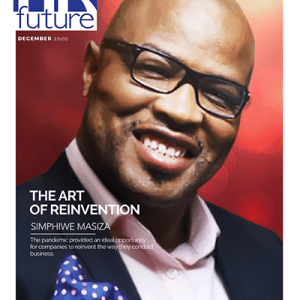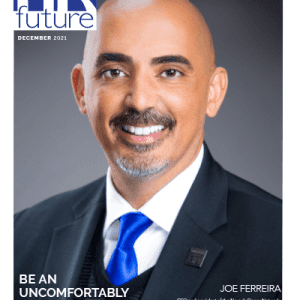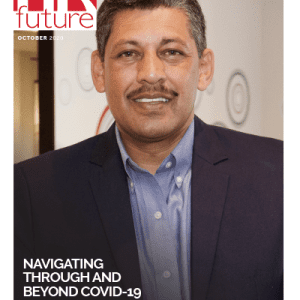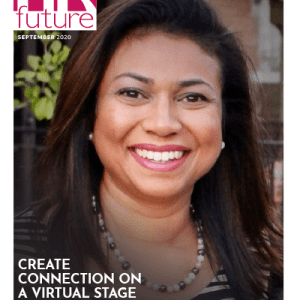Healthcare benefits are readily available to people. They are offered to employees as mandated by the governments in many countries.
As of March 2024, 72% of private-sector workers and 89% of state and local government employees had access to medical benefits in the U.S. Dental coverage was available to 43% of private workers and 60% of government employees, while vision benefits were offered to 28% of private workers and 39% of government employees.
But as an employer, it’s best to create an inclusive wellness program that works for everyone. Recognize that the workplace comprises employees from various generations, including Gen Z, Millennials, Gen X, and Baby Boomers. So, what better way to set this up than to design a health benefit program for multigenerational teams?
How do you go about doing so? Here’s how:
1. Understand What Each Generation Needs
Before designing a health benefits program, identify the needs of each generation first. This requires you to conduct thorough research about each generation. That said, here’s what you’ll most likely find out:
- Gen Z (1997–2012): This generation grows up exposed to digital technology, yet struggles with psychological well-being. So, they look for mental health support, telehealth, and wellness apps, for instance.
- Millennials (born 1981—1996): This generation is in their 30s, establishing their careers and building families. Therefore, it’s best to offer flexible plans, fertility benefits, and therapy coverage, for example.
- Gen X (1965—1980): This generation often cares for both kids and aging parents. Thus, family and eldercare benefits are key!
- Boomers (1946—1964): This generation is not getting any younger. So, they prefer traditional plans with strong chronic condition coverage and retirement health planning.
Adrian Iorga, Founder & President at 617 Boston Movers, recommends seeking employee feedback for each generation before designing a health benefits program.
Iorga says, “You can’t build meaningful health benefits without first understanding what your team actually values across every generation. Listening to your employees helps you offer support that’s not just relevant, but truly impactful. When people feel their needs are heard and met, they’re more engaged, loyal, and motivated to do their best work.”
2. Offer a Solid Core with Flexible Add-Ons
The next crucial step is to set up a health benefits program in place. However, ensure this program is best suited for all your employees. To make this work for each generation, offer the following:
- Basic health plans typically offer medical, dental, and vision coverage, benefiting everyone regardless of age. However, they only cover basic services, such as medical care, simple tooth extractions, and eye checkups. Some employers offer basic plans related to health and well-being, like pharmaceutical coverage, life insurance, and workers’ compensation.
- Optional health benefits: It’s a good idea to offer health benefit packages that allow employees to personalize them based on their individual health needs. Think of add-ons, such as therapy stipends, virtual care, fertility plans, or eldercare support. Remember, each generation has unique health circumstances that require specific benefit packages to support them in the long run.
3. Support Mental Health Across Generations
It’s no secret: Employees are struggling in the workplace. They usually experience burnout, which further escalates to depression and anxiety. That’s why the World Health Organization (WHO) declares this an occupational phenomenon, defined as:
It’s crucial to support mental health in the workplace for all generations, especially for the younger ones. Prioritize this as part of your employee health and well-being program—Here’s how:
- Make mental health part of the norm: For example, hold mental health days to promote employee self-awareness, offer psychological health counselling, and provide support tools and resources.
- Provide options for different preferences: Even when it comes to health benefits, it’s different strokes for different folks. For instance, Gen Z may lean into digital tools, but boomers may prefer in-person or private help.
- Offer online and offline service benefits: It’s best to blend digital and offline services to reach everyone regardless of generation. For example, while providing a list of online doctors in Ontario, also send a list of affiliated clinics and hospitals in the area.
4. Plan for Occupational Safety and Long-Term Health
Health benefits don’t only revolve around medical, dental, and vision coverage. As part of your employee program, also consider the importance of safety and health in the workplace. The goal is to maintain safety and speed on your worksite and promote long-term health and well-being at work.
Here’s how to ensure occupational safety and long-term health for all generations:
- Workplace safety: It’s crucial to address age-related risks at work. For instance, older employees may be more prone to physical injuries or chronic health issues. So, you might want to offer workers’ compensation so they can file for accident-at-work claims. But importantly, establish safety measures in place to keep them safe at work!
- Long-term health: As an employer, consider health and well-being as a long-term goal for your loyal employees. Ensure that you add this goal to your benefits program. For instance, provide strong recovery support, including coverage for rehabilitation, return-to-work plans, and legal guidance when needed.
Lacey Jarvis, COO at AAA State of Play, promotes occupational safety and long-term health in the workplace since his workers deal with heavy playground equipment for installation.
Jarvis explains, “When your team handles physically demanding tasks like ours, workplace safety and long-term health can’t be an afterthought. They must be built into your benefits program, from injury prevention to recovery support. Ultimately, it’s about protecting your people today and helping them stay healthy for the long haul.”
5. Communicate Clearly and Inclusively
As part of your health benefits program, it’s crucial to establish effective employee communication. This entails holding proper orientation and regular benefits updates among all generations.
It’s essential to inform your employees about and make available the health benefits they are entitled to. Otherwise, what’s the point of offering this program if they can’t fully maximize their benefits? Here’s what you can do:
- Leverage different communication channels. Different generations use various modes of communication. The younger generation may prefer digital options, while older ones tend to opt for printed materials. To keep them informed, offer resources such as digital guides, live information sessions, and/or one-on-one consultations.
- Personalize your message per generation. Different generations absorb messages differently. For example, Gen Z might prefer short videos, while Boomers may appreciate printed materials. When orienting and updating your employees, customize the messaging to suit their needs.
- Gather regular feedback for improvements. As mentioned, different generations have specific health issues and concerns. You need to ask them what they need and want in terms of health benefits. That way, you can offer what’s best for each generation and improve your program along the way.
6. Promote DEI for Health Initiatives
The diversity, equity, and inclusion (DEI) initiative is essential in the workplace. Pew Research Center measured the impact of DEI practices in the workplace, whether they help or hurt certain groups. While opinions were mixed, the vast majority revealed that they benefit most groups (see the statistics below).
It’s easy to see employers incorporate DEI into workflows. However, it also applies to health and wellness programs. Here’s how to promote DEI in your health benefits:
- Diversity: Your health benefits should serve employees of all ages and backgrounds. That means offering a mix of support options, from mental health apps for Gen Z to chronic care support for Boomers. That way, no one feels left out!
- Equity: Go beyond one-size-fits-all plans. For instance, normalize support for mental health, chronic illness, and disability. Likewise, offer gender-affirming care, access to culturally competent providers, and multilingual services so everyone can access care with confidence.
- Inclusion: Ensure every employee feels seen, heard, and supported. This could involve offering flexible counselling formats, gathering regular feedback, or highlighting stories that reflect a diverse range of employee health journeys.
Nicolas Breedlove, CEO at PlaygroundEquipment.com, underscores the importance of DEI in health benefits programs. When working with her HR personnel, he’s very particular about such a program, as their workers handle heavy equipment that could pose a risk to health and safety.
Breedlove shares, “Health benefits should reflect the diversity of the people who keep your business running. It’s crucial to design programs that are not only inclusive but also genuinely responsive to diverse health risks and needs. A strong DEI-focused benefits strategy entails smart risk management, which is essential to long-term workforce health.”
Final Words
Health benefits are essential in the workplace for promoting employee well-being. However, companies and organizations employ people of all ages. So, it’s crucial to offer programs designed and customized for different generations.
That said, follow the crucial steps outlined above to design a health benefits program for multigenerational employees. Start by identifying what each generation needs and offering options best suited for each. Likewise, foster mental well-being, workplace safety, and long-term health. Lastly, promote effective communication and DEI initiatives for a successful program.
Ultimately, a health benefits program for multigenerational teams makes for a healthy, happy, and fulfilled workforce. Read the blog to get more valuable insights into employee health and well-being. Or better yet, subscribe to its online magazine!
Guest writer





























